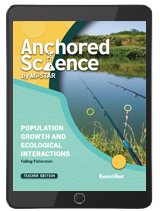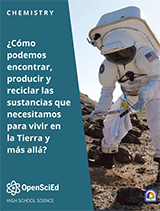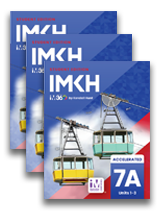Search Listing Name
product:
Navigator Heritage Series: Harry Potter and the Philosopher's Stone Novel Study Guide 1 Year License
Magic and adventure encompass every page of this popular children’s book series. Harry Potter has a miserable childhood living with the Dursley family. His room is a tiny closet under the stairs. But one day, mysterious letters begin arriving. Harry Potter is destined to attend Hogwarts School of Witchcraft and Wizardry to study magic. In this first novel of the hit series, Harry Potter begins his studies at Hogwarts, where he will spend the next seven years of his life studying to become a wizard. He learns that he is the only person to survive a deadly spell cast by Lord Voldemort,

product:
Anchored Science Unit 6.6: Population Growth and Ecological Interactions Teacher 3 Year License
Anchored Science by Mi-STAR is a comprehensive middle school science curriculum driven by a bold vision for the future, where science isn’t just a subject but a powerful, integrated body of knowledge that equips students to tackle today’s pressing societal challenges. This curriculum harnesses the full potential of the Next Generation Science Standards, empowering students to actively engage with science and engineering practices. They’ll move beyond the classroom, using their skills to solve
product:
A World of Wild, Wacky, Wonderful Words Student Guide
This unit is designed to engage primary students with high abilities in the verbal domain in challenging reading, writing, and interpretation skills in the language arts. It reflects talented young learners’ need for greater exposure to higher-level thinking activities sooner in their school years than other students. The unit specifically focuses on literature that uses extensive figurative language in order to support young children’s development of metaphoric competence in the areas of both comprehension and
product:
Beyond Words: Figurative Language Student Literature Workbook 1 Year License
Organized around the study of figurative language, including simile, metaphor, and personification, this unit explores the idea that language can change the way we think about the world by creating new images and connections in our minds.
The Student Literature Workbook eBook includes fillable student activity pdfs that support lessons and each unit’s short stories and poems. The workbook engages students in exploring carefully selected, challenging works of literature from various times, cultures, and genres. They include:


